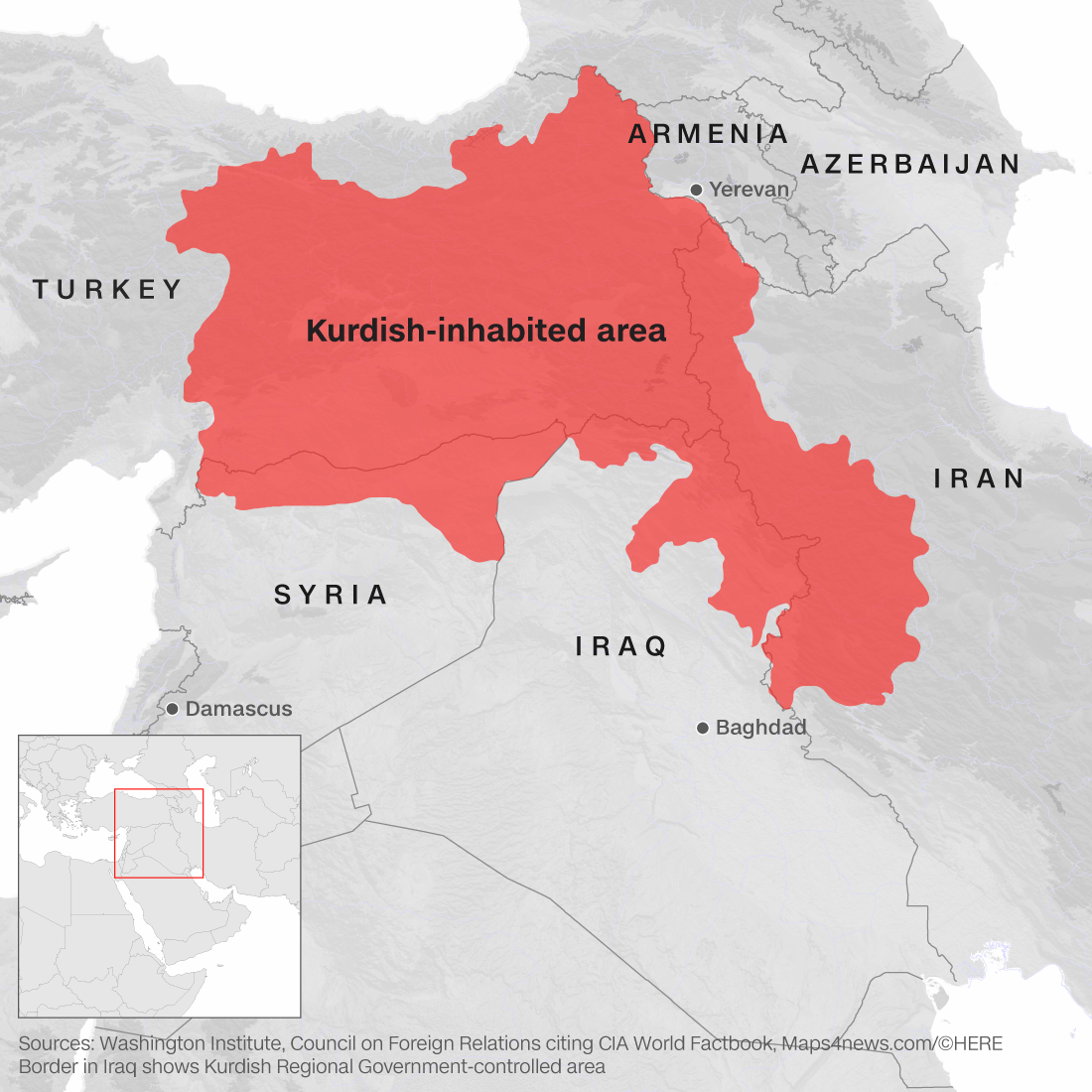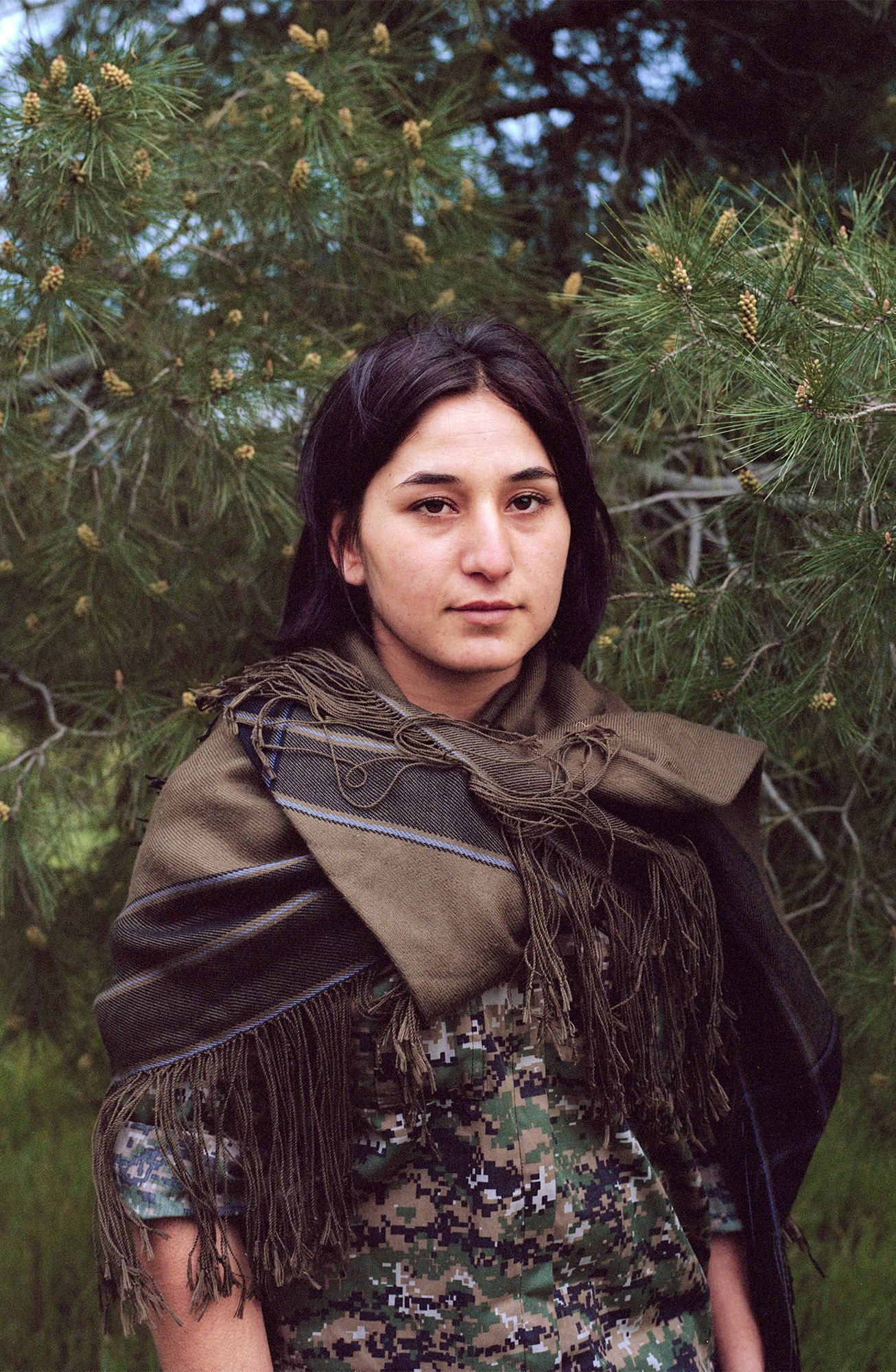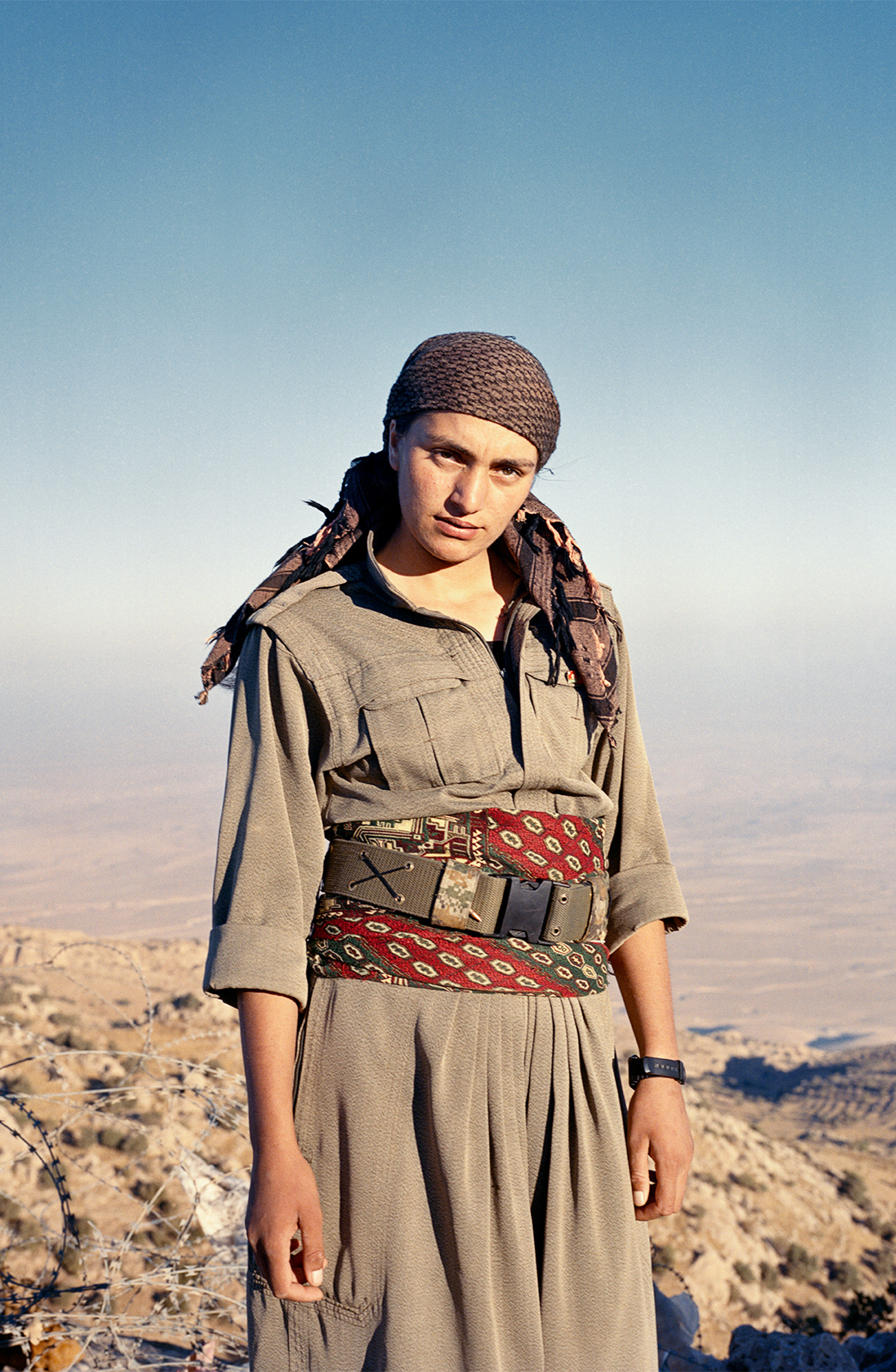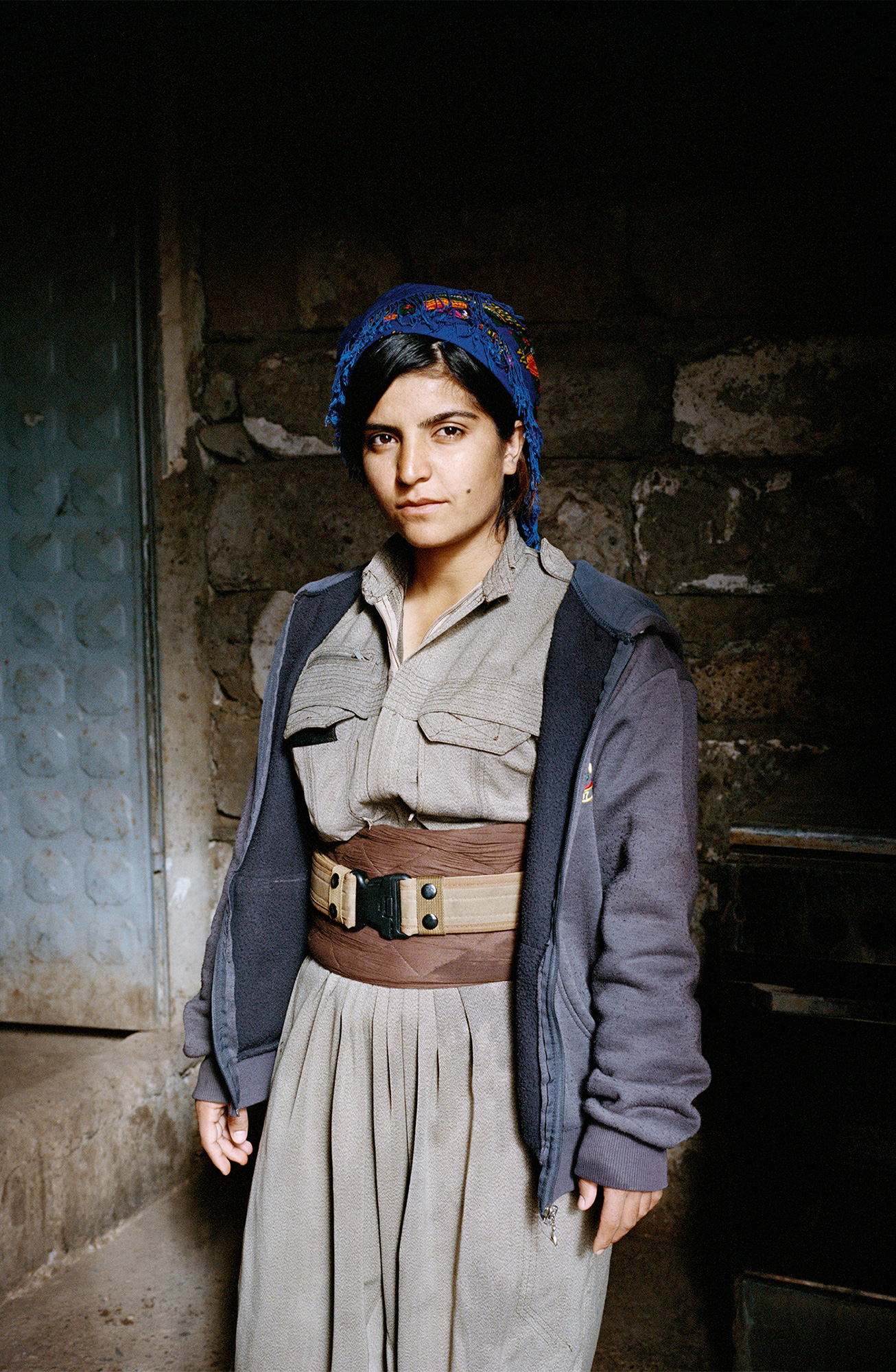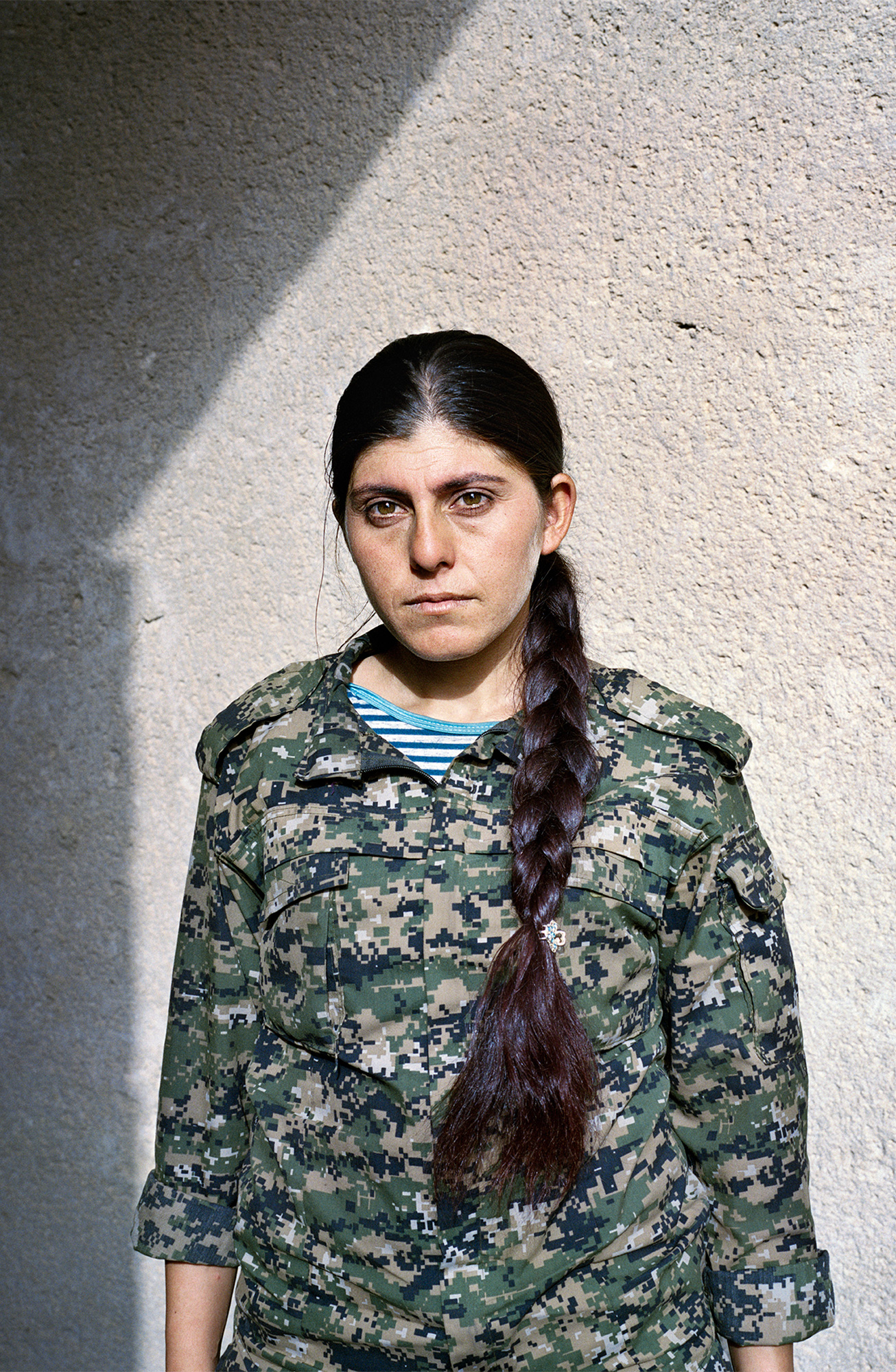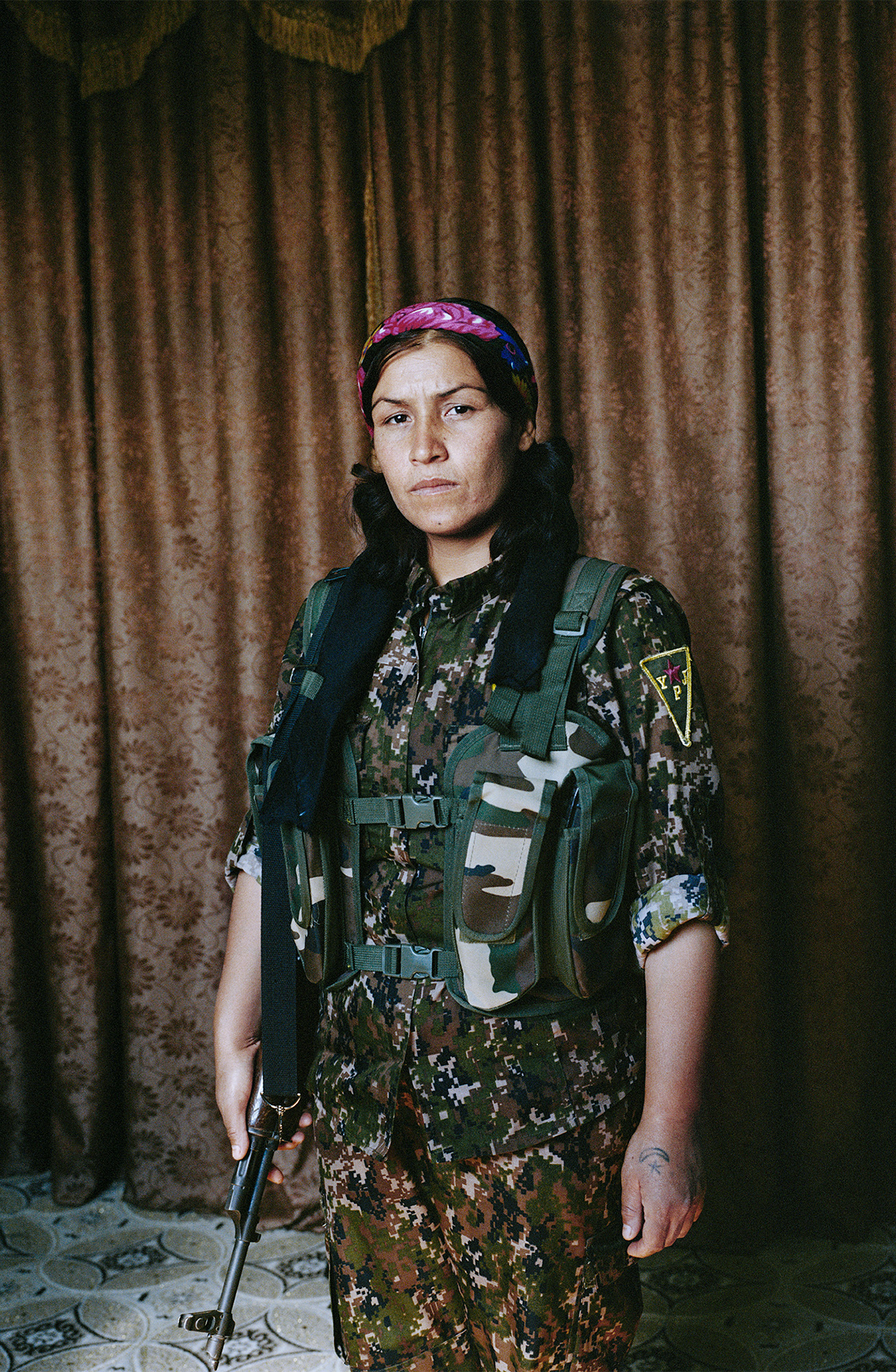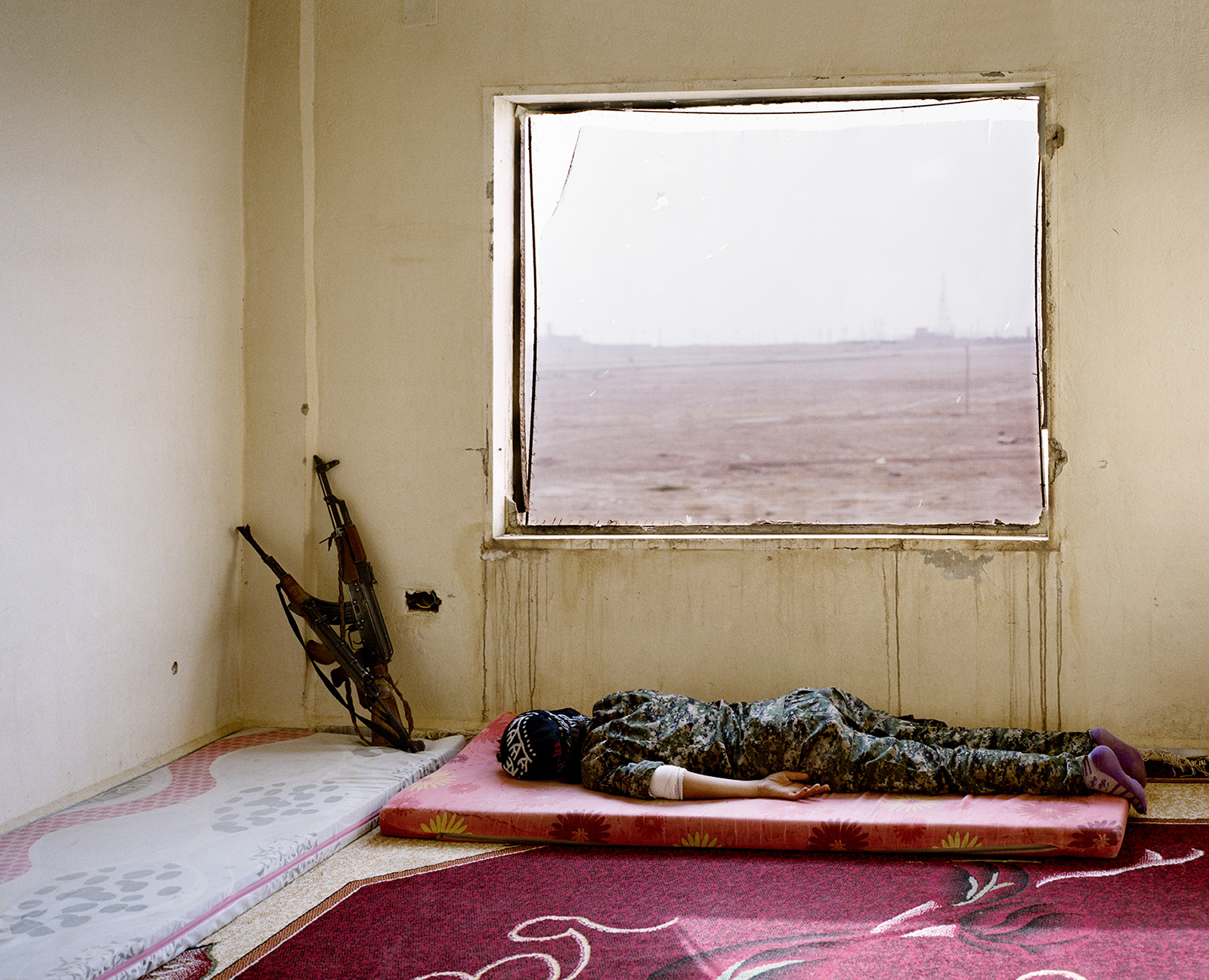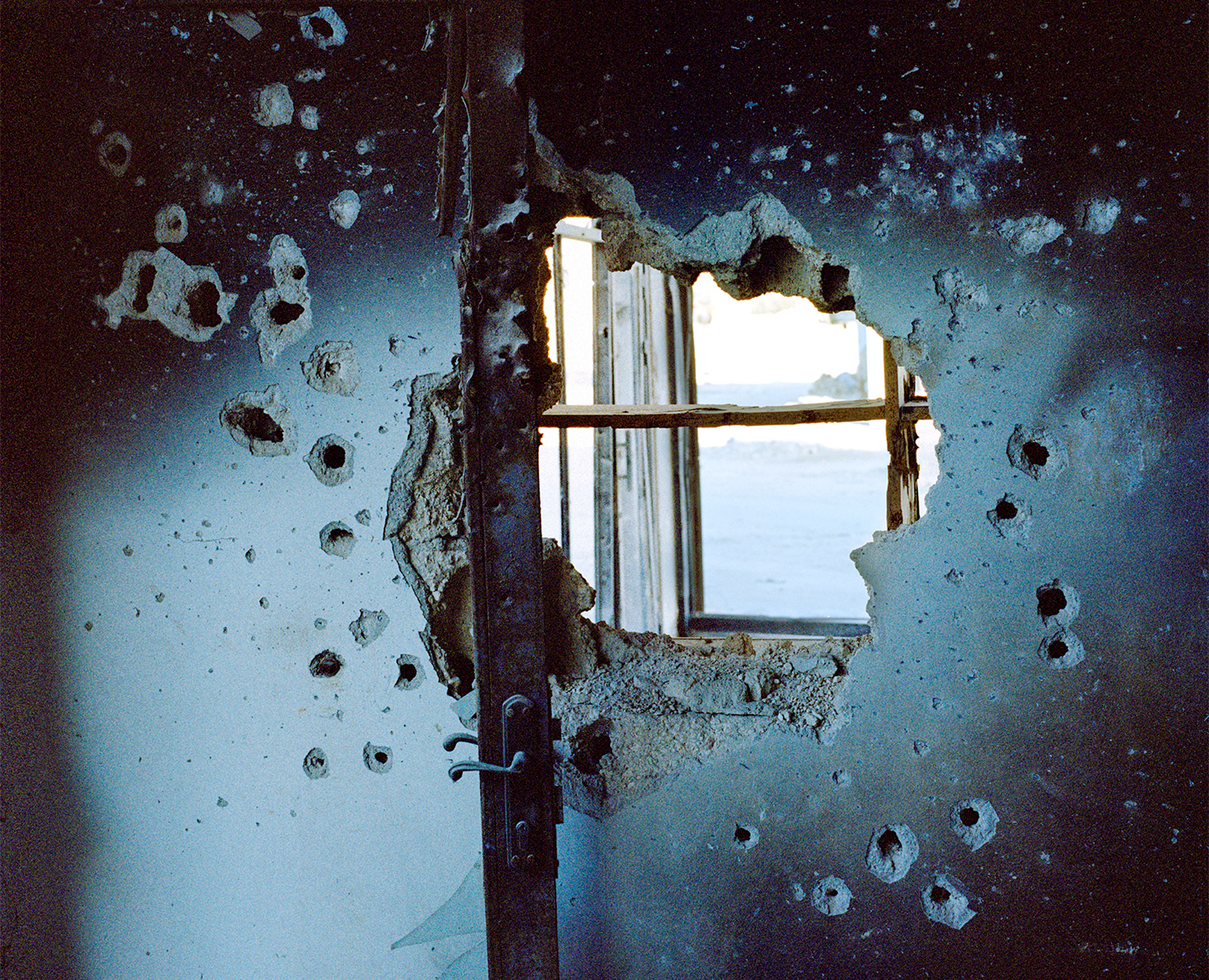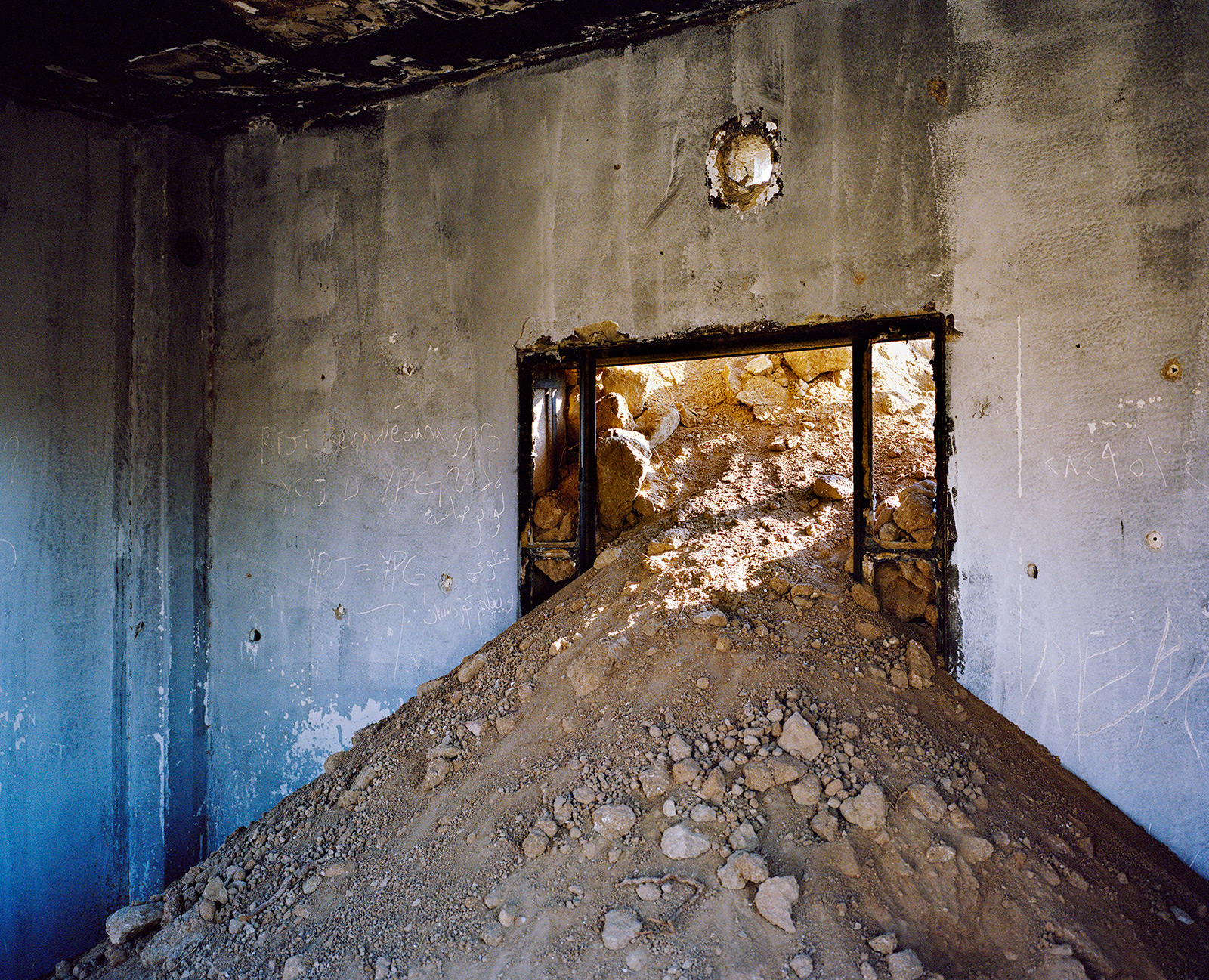While there is no official count, it is believed that 30% to 40% of combatants in Kurdistan are women.
After the Syrian war began in 2011, Berlin-based photographer Sonja Hamad saw many images of Kurdish female fighters – but felt they did not do the women justice. “The images were very sensational,” she says. “The women were depicted in the same way as men – always holding weapons. The pictures didn’t say anything about the women as individuals.”
Born to Kurdish Yazidi parents in Damascus, Syria, in 1986, Hamad was 3 years old when her family moved to a small town in Germany’s North Rhine-Westphalia state.
Growing up, Hamad struggled to talk openly about her background with friends, and says she finds it easier to communicate through a visual medium – especially photography.
Between March 2015 and December 2016, Hamad made three trips to Iraqi Kurdistan and the Kurdish-controlled region of Rojava in northern Syria to meet – and photograph – the women behind the guns.
Her images of fighters are collected in “Jin – Jiyan – Azadi” – “Women, Life, Freedom.”
Dijlin and Zilan were both 19 years old when Hamad met them in 2015.
Dijlin fights for the YPJ which, with its male counterpart the YPG, has battled ISIS jihadists who have launched repeated attacks on Syrian Kurdish areas since 2013.
When Hamad met her, Dijlin had been fighting for three years and had spent half that time on the front line. Despite being injured, and against the will of her family, she continues to fight.
Many of the fighters are teenagers when they join.
Some sign up with the support of their parents, says Hamad. Others have run away from home because their parents would not allow them to go.
Hamad says she built a “deep and honest connection,” with the fighters. “We treated each other like sisters,” she says.
In the mountains of northern Iraq, Hamad met members of YJA Star – the female guerrilla units of the Kurdistan Workers’ Party (PKK), which spearheaded Kurdish women’s military involvement.
Zilan received only six months of theoretical education and one month of practical training before she began work as an emergency doctor, tending to fatally wounded fighters, says Hamad. She has seen hundreds of comrades die and tries to provide them all with a proper funeral.
Diljin told Hamad that she is fighting for women’s rights. According to Hamad, many of the fighters are waging war on the patriarchy – as well as enemy combatants.
Kurdish women typically marry at a young age and “even if they want to go on a walk, they have to ask permission,” she explains.
They fight for equality by taking on traditionally masculine roles and transforming perceptions. For many, joining the militia has been their first taste of freedom.
Many of the fighters Hamad met appeared much older than they really are.
“They experience high levels of stress,” says Hamad.
She says traumatic events occur so rapidly that the women don’t have time to process their experiences.
“These young women are much more mature than their counterparts in Europe, because they have experienced so much already.”
Many women fighters are followers of Abdullah Ocalan, the imprisoned leader of the Kurdistan Workers’ Party (PKK). Posters of Ocalan are a common sight in Iraqi Kurdistan.
Hamad says that women’s liberation is deeply rooted in PKK ideology. “Ocalan has stated that ‘the land cannot be free when women are not free,’” she says. “Even from his Turkish jail cell he is sending the women mental ammunition for their emancipation.”
The YPJ battalions occupy empty houses abandoned by families fleeing the conflict. A volunteer force, they are not paid and rely on locals and the military for their food and supplies. “The local Kurdish community are extremely supportive,” says Hamad.
21-year-old Shirin told Hamad that despite having suffered severe injuries, she wants to remain in the militia after the war. She is an only child and her parents are very concerned about her.
In January 2015, YPJ fighters helped to liberate Kobani, a city in northern Syria which had been besieged by ISIS since September 2014. When ISIS took control, most of its 40,000 residents fled over the Turkish border and much of the city was destroyed. In September 2015, when Hamad visited, residents had just started to return.
In the soft morning sunlight the wrecked city took on a strange beauty, but Hamad had to tread carefully to avoid unexploded bombs.
In spring 2015, Kurdish fighters helped to retake the town of Tal Hamis in northern Syria from ISIS forces. Tal Hamis had been strategically important for ISIS because it linked areas they controlled in Syria and neighboring Iraq.
Hamad visited the location of the battle’s first frontline, near the Iraq border, where the fighters had been stationed while defending the city. She explored the houses that had been destroyed – their windows smashed in and walls punctured by bullet holes.
More than 10,000 Kurdish refugees, who fled Turkey in the 1990s when their villages were burnt down by government forces, live in Makhmur refugee camp in northern Iraq.
After the camp was attacked by ISIS in 2014, guerrilla fighters were stationed around the surrounding hills to provide protection.
Hamad says that although men and women separate into different camps overnight, they often train together and fight shoulder to shoulder. This keeps the guerrilla community closely connected and promotes equality.
The female Kurdish fighters have had a “definite impact on the male part of Kurdish society,” says Hamad. “When they see women with weapons and fighting, they learn to respect them.”
